NL5
Fast & deep 3D live cell imaging
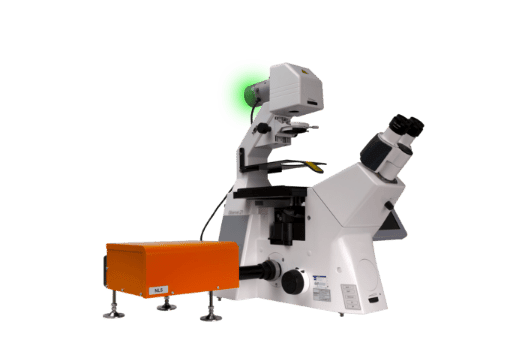
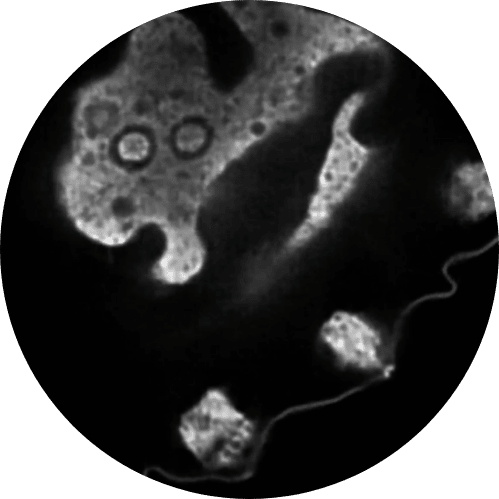
Volvox autofluorescence in 561 excitation. 100x 1.45 oil
Fast & deep 3D
live cell imaging
NL5 is a fast line-scanning confocal system with high sensitivity and resolution. It allows you to quickly screen a multi-well plate with multicolor images, from which you can select the most promising ones. Capture 3D live samples with minimal phototoxicity, high resolution and contrast. Like RCM, NL5 keeps your samples happy under the microscope for a long time and is easy to use. Convert your research microscope into a fast-scanning confocal microscope that provides very gentle conditions for your live samples.
How NL5 improves your imaging experience
- High contrast deep 3D imaging without pinhole cross-talk
- High sensitivity and resolution (170 nm after deconvolution)
- Live cell friendly
- Hardware integration into third-party software
- Field upgradeable with an emission filter wheel (6 positions)
- Compact & easy to use
Discover the way NL5 improves your imaging experience
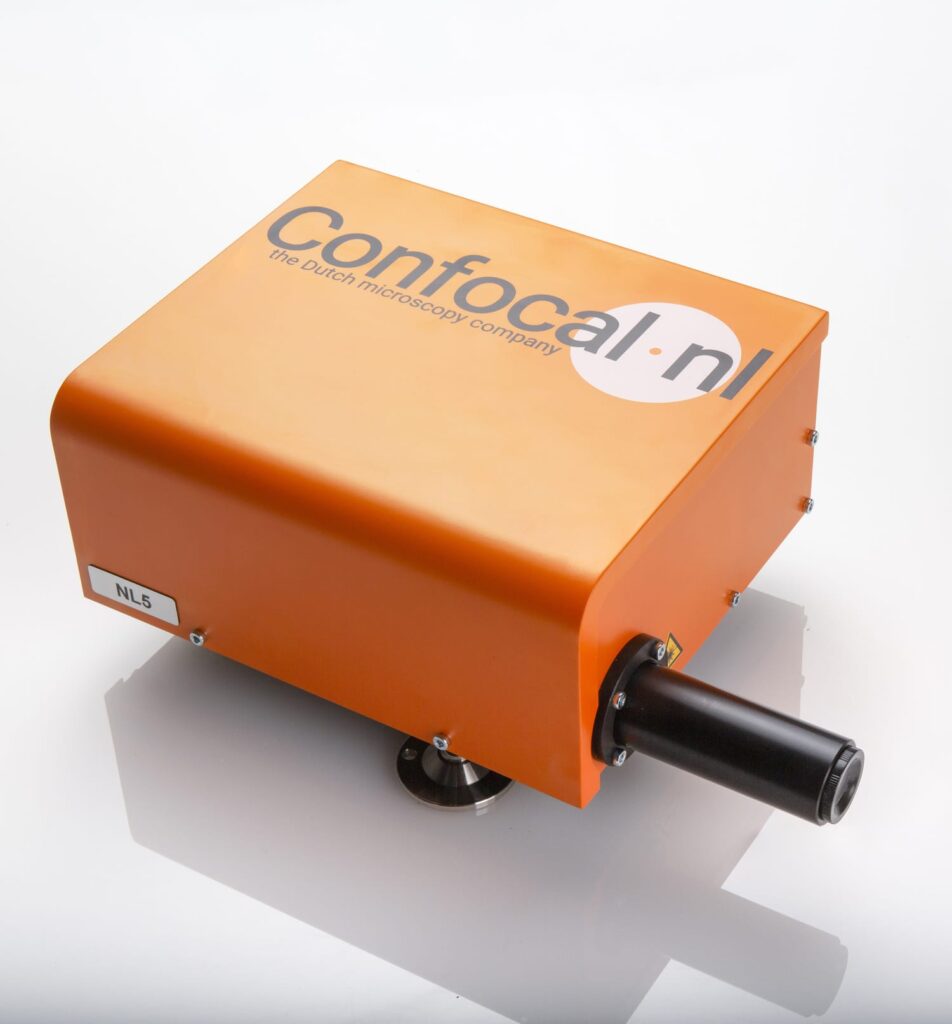
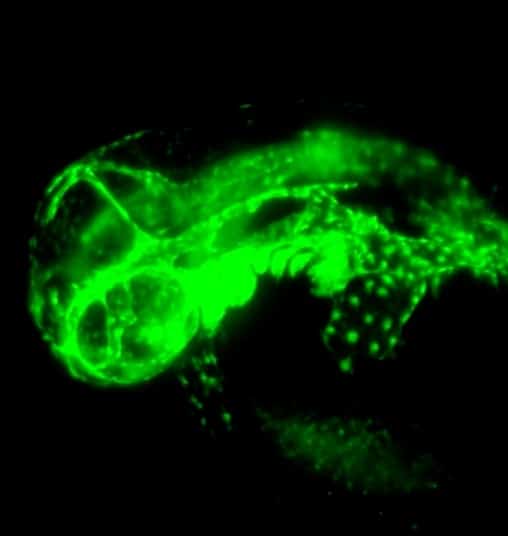
Zebrafish embryo (24 to 48 hpf). Endothelial cells labelled with GFP Sample courtesy: Kinki Jim. VUmc Amsterdam, MMIC
Fast scanning speed, low levels of phototoxicity
In the field of biology, some natural processes happen fast, like cell and protein dynamics and cell-cell interactions. Therefore, fast scanning speed is needed to study them. And that is exactly what NL5 brings to the table! In addition, researchers in developmental biology, regeneration or immunology fields often need to image large live samples (mouse embryos, zebrafish, organoids) for a long time without losing any detail of the cell’s behavior. In that case, a combination of speed and a low phototoxicity system like NL5 is perfect.
Discover the way NL5 improves your imaging experience
The benefits of using NL5
NL5 is a fast scanning confocal system that reaches 55 fps (full frame), much faster than regular point-scanning confocal systems. In addition to speed, it brings very gentle imaging conditions for your samples as well. Perform live cell imaging for more than a day, with no signs of phototoxicity. NL5 is easy to use, and requires basic training to operate.
NL5 does not cause any pinhole cross-talk, as it has only one slit pinhole. Pinhole cross-talk is associated with spinning disk systems, because they contain a disk with multiple pinholes combined and the out-of-focus light can sometimes pass through the closeby pinholes. This effect is more evident when imaging deep within the sample, making NL5 the ideal system for those applications.
NL5 is a cost-effective solution that can be coupled to any research microscope via the c-mount interface
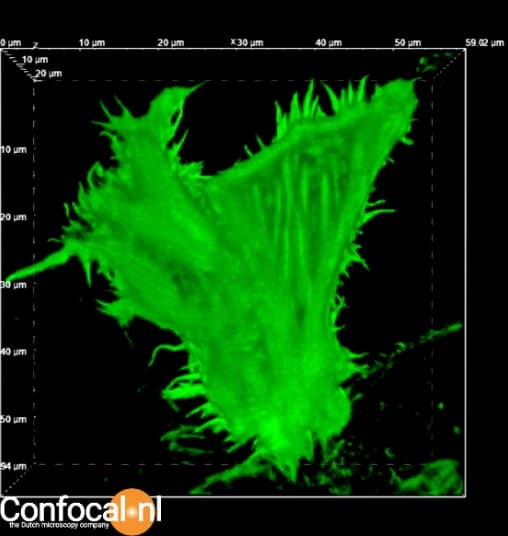
HeLa Cell with cytosolic GFP. Sample courtesy of Caroline Pham (Lodder’s Group). Experimental Cardiology Department. VUmc location AMC, Amsterdam
Applications for NL5
High resolution & low phototoxicity
NL5 is an easy-to-use and compact confocal microscope system, a great addition to any microscopy facility. It’s a fruitful solution for individual research labs to easily convert any existing widefield fluorescence microscope into a fast confocal microscope system with high sensitivity and resolution. Capture datasets of 170nm lateral resolution after deconvolution at 55 fps. Study fast cell and molecular dynamics, or perform high contrast deep 3D imaging with minimal aberrations. The high sensitivity of the modern sCMOS cameras used as detectors facilitates acquisition with low light sample exposure, making NL5 ideal for live cell imaging.
Discover the way NL5 improves your imaging experience


NL5: technical specs
NL5 | |
|---|---|
Detector | Camera |
Resolution in real time | 170 nm * |
Detector sensitivity | up to 96% QE |
FOV | FOV 18mm (FN18); 330×330 µm (40x
objective) |
Speed in line scanning | up to 75 fps for 2048×512 px and up to
55 fps for 2048×2048 px** |
Speed in fixed line mode | 500 fps and more (camera limited) |
Wavelength | VIS (400-700 nm) |
Software | Micromanager, Inscoper, Volocity, NIS
Elements |
Deconvolution with | Microvolution (real time), SVI Huygens
(postprocessing) |
Modalities | Widefield and Confocal (motorized) |
Emission filter | 1 position (standard with Quadband) |
Weight | 4kg |

See for yourself how we improve your experience
Request your
personalized demo
- Your online demo will be shown in only 45-60 minutes
- Our experts will lead you through our products performance
- We will contact you and together, we pick a day and time

